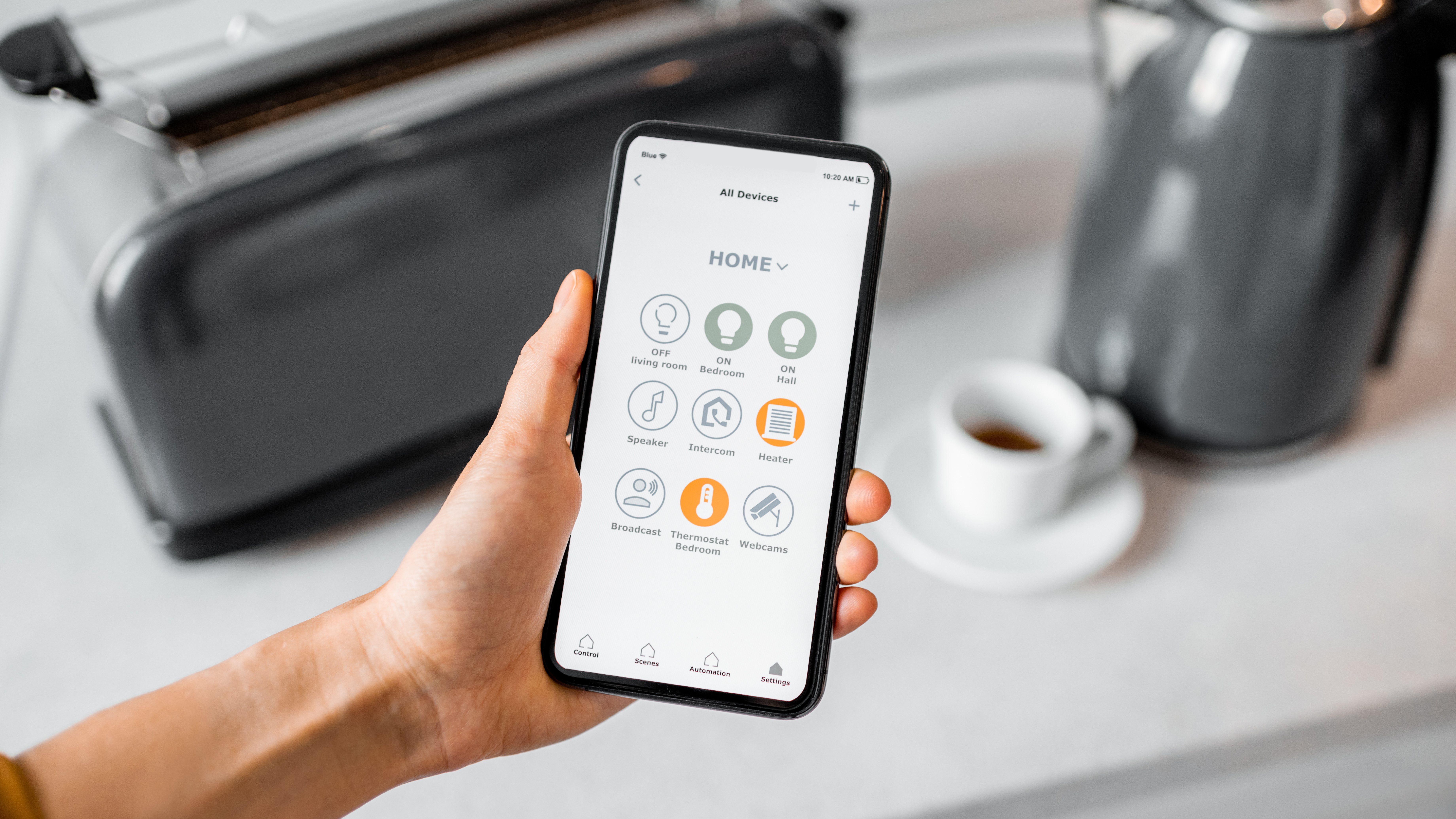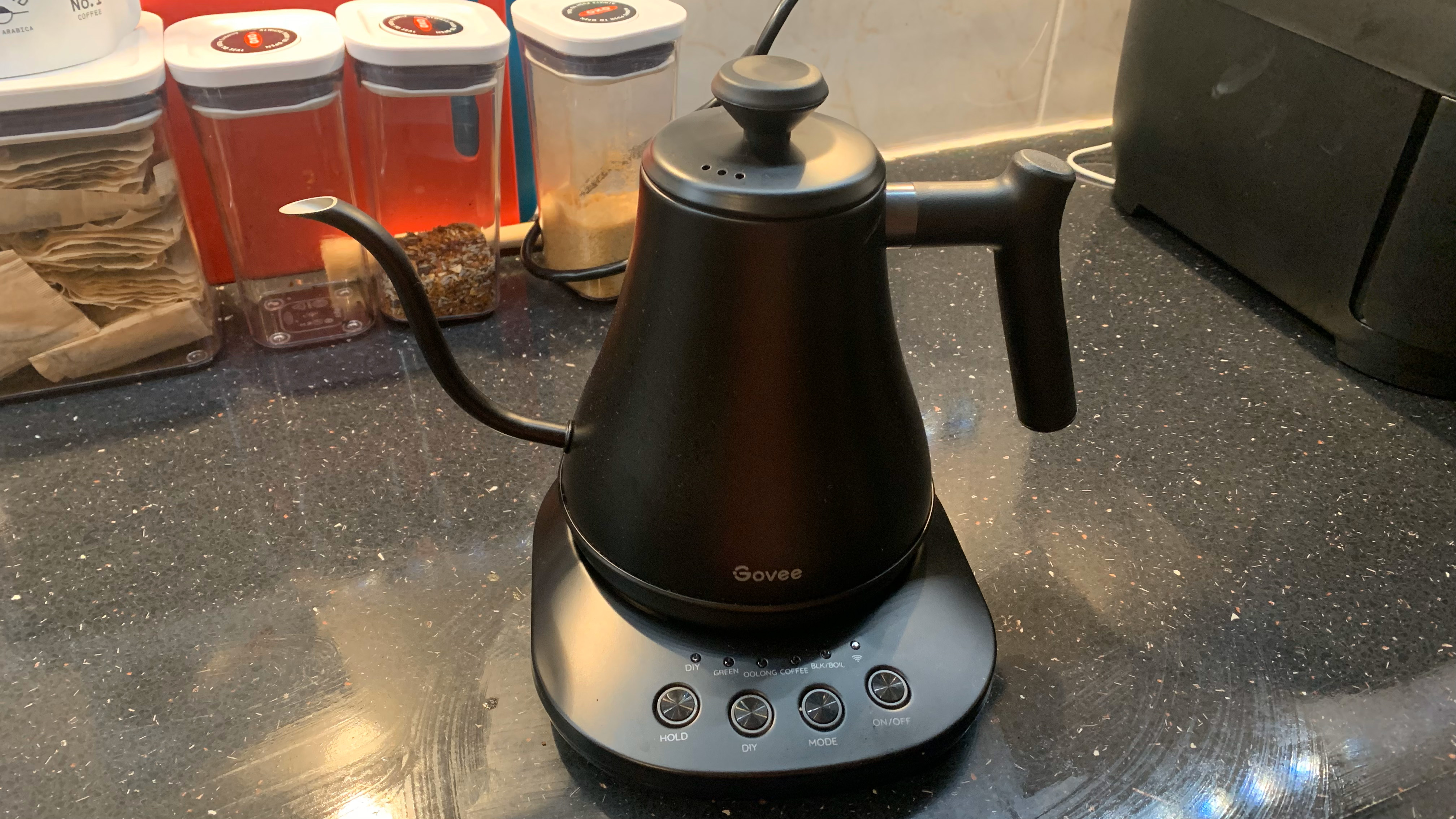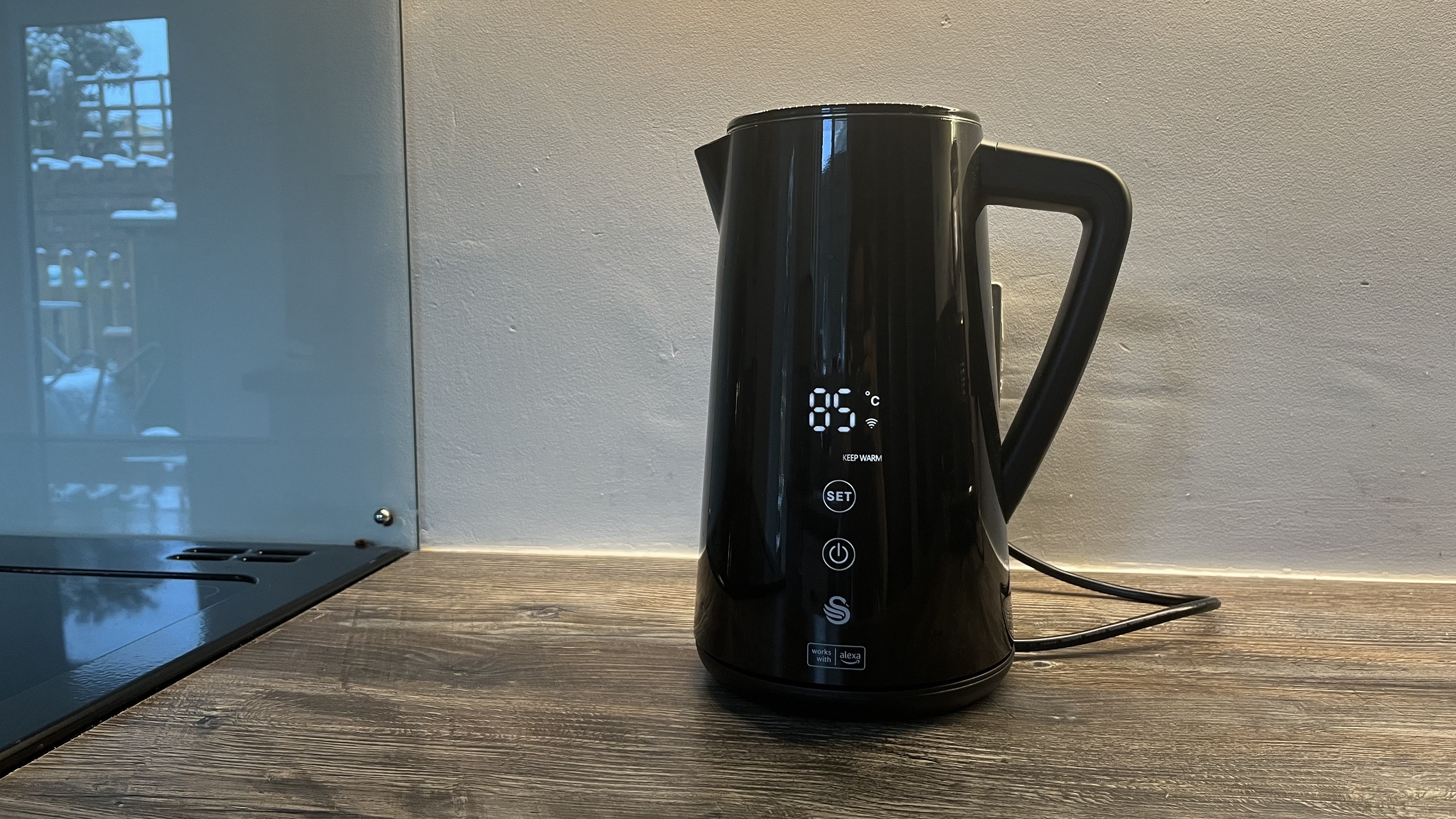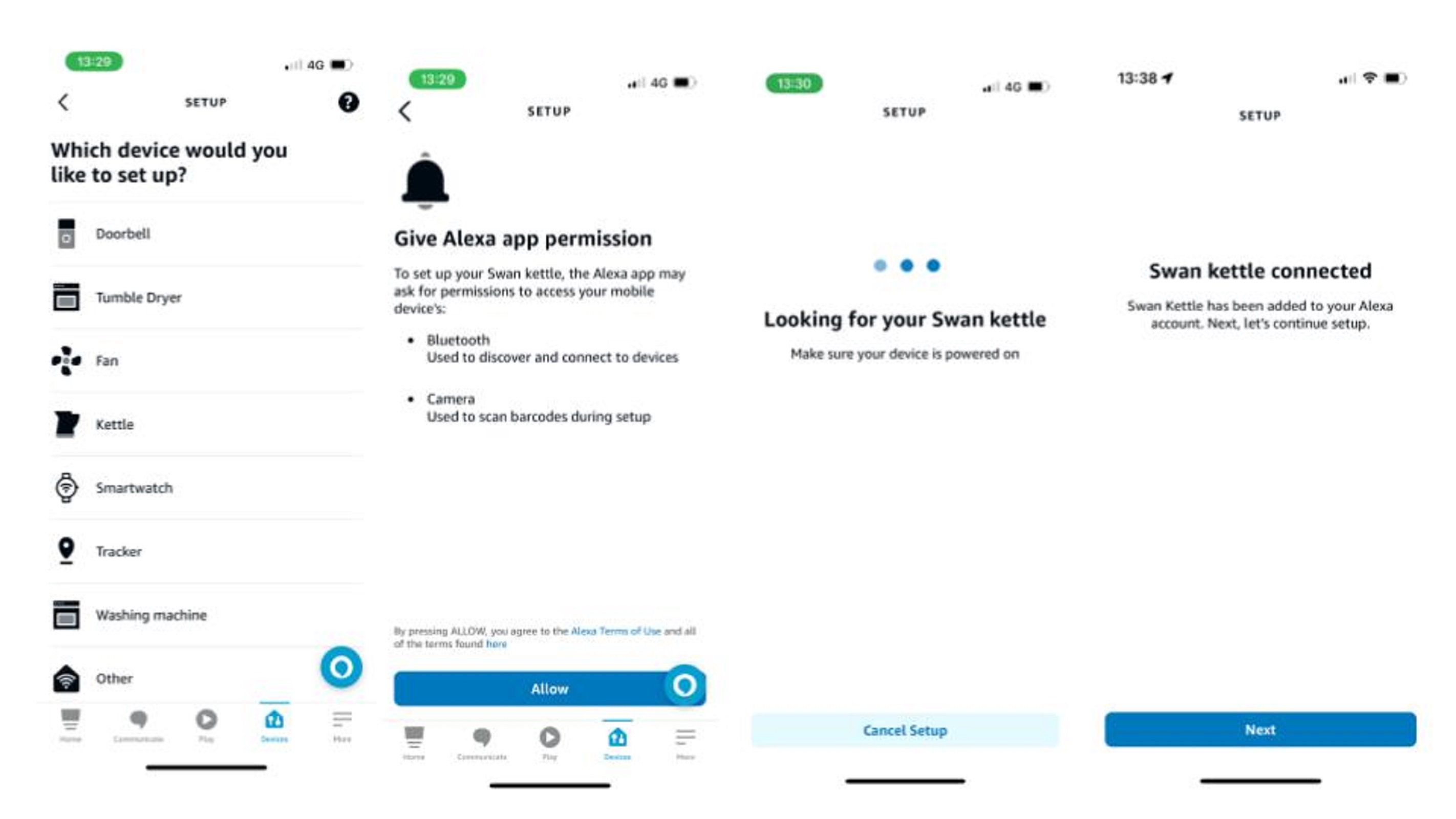Smart kettles are more than just a gimmick, yet nobody seems to want one
Spilling the tea on smart kettles

You can’t walk through any electronics retailer these days without being confronted with some of the best coffee makers; compact Tassimos and Nespressos, vast Delonghi devices, and increasingly, smart coffee machines.
As a Brit, and living in a world where tea is part of the national fabric, this leaves me bewildered, and wondering why the same energy isn’t there for our beloved kettles. They’re out there – we loved the Swan Alexa Kettle – but how many people do you know that actually own one?
It’s not as if they’re expensive, either. Take the Swan Alexa, just £85.99 in the UK. While that kettle is not available in the US, a feature-equivalent device like the Govee Smart Electric Kettle retails at $79.99. In Australia, the Nedis SmartLife Kettle is $114 AUD.

My introduction to the concept of the smart kettle was in 2017 when I reviewed a device called the AppKettle, a smart, internet-controllable kettle that you could program to prepare boiled water at a set time – from anywhere. I was blown away; as a tea drinker, this was next-level stuff, yet it was rare to find any connected kettles in electronics stores.
Even now, you don’t see these kettles demonstrated, which I think is selling them short. Trust me, this is the sort of tech that has to be seen in action to be believed. The developer of the AppKettle knew this – the team made several promotional videos (like this one) positioning it as a lifestyle device, a bold move I think should have paid off.

We had 2 million Teasmades
Perhaps my bewilderment over the lack of smart kettles in kitchens across the land is the fact that they aren’t the first device to reinvent the tea-wheel. A programmable kettle that boils water exactly when you want it… 40 years ago, two million homes and hotel rooms had Goblin Teasmades, which essentially did the same thing (admittedly without the smart aspect), brewing your cup of tea for you just in time for your morning alarm to go off.
A smart, app-controlled kettle makes so much sense as a convenience, whether it’s setting your kettle to boil in time for your morning brew (even if it is an instant coffee), boiling it in time for the office mid-morning coffee break, or programming the kettle to be ready with the perfect temperature for your specific tea (every blend is different) or pour-over coffee as you walk through the door after work.
Get daily insight, inspiration and deals in your inbox
Sign up for breaking news, reviews, opinion, top tech deals, and more.

Two million smart kettles isn't much to ask. Sure, you can buy a standard electric plastic water boiler for under $15 / £10 / $AU40 in your local supermarket, and for smart kettles, the price is unsurprisingly higher.
However, you can pick one up for around $80 / £70 / AU$100, expect the same 1.5- or 1.7-liter capacity as your usual boil, and interact with it in your mobile app or via Alexa or Google Assistant. For smart home enthusiasts, smart kettles aren’t yet included in the Matter specification, but that’s surely coming later on.
App and smart speaker integration vs click-and-boil
But perhaps I’m getting this wrong, and maybe the smart kettle manufacturers are, too. There's a chance that the success of the smart kettle isn’t reliant on convenience; it also isn’t about saving energy bills by only boiling water when you want it.
What if the reason smart kettles haven’t taken off is about habit and culture? After all, when was the last time you wandered into the kitchen, forgot what you went in there for, and then ended up just making yourself a drink instead? This morning?
In a world of smart charging electric vehicles, TVs with smart home hubs inside, and lights that illuminate your entrance to the room at night, the humble kettle seems remarkably resilient.
Perhaps it's culturally protected in places like the UK; we don’t want our kettle to be smart. We pop into the kitchen during commercial breaks, during an argument, when we’ve had bad news, and when we’ve had good news. The kettle is boiled and a pot or a cup is brewed. It’s part of our cultural fabric, a callback to simpler times, of stove-top gossip, tea cozies, and ginger cake. After all, when did you last see a Teasmade outside of Queen’s I Want to Break Free music video?
Perhaps the smart kettle just came at the wrong time. Think about it. If your entire home is styled around the kitchen, and you’re spending more time right next to the kettle, smart features seem, well, useless.
A hot kettle when you get home, but no drink
I may have simple tastes, but finding a freshly boiled kettle in the kitchen as soon as I get home feels like luxury. There’s no waiting around, apart from brewing the tea itself.
With a smart kettle, you still need to make your tea, pour-over coffee or instant coffee (for which I judge you). With a smart coffee machine, your drink is fully ready as you walk through the door. Your virtual barista does the brewing and pouring for you.
A smart kettle doesn’t. It’s easier to program a coffee – almost any coffee - than a cup of tea, and while reviews for these devices are largely positive, the sales are slow. It’s almost as if no one cares about the smart kettle.
Or perhaps it’s just a… slow burner?
Christian Cawley has extensive experience as a writer and editor in consumer electronics, IT and entertainment media. He has contributed to TechRadar since 2017 and has been published in Computer Weekly, Linux Format, ComputerActive, and other publications. Formerly the editor responsible for Linux, Security, Programming, and DIY at MakeUseOf.com, Christian previously worked as a desktop and software support specialist in the public and private sectors.

